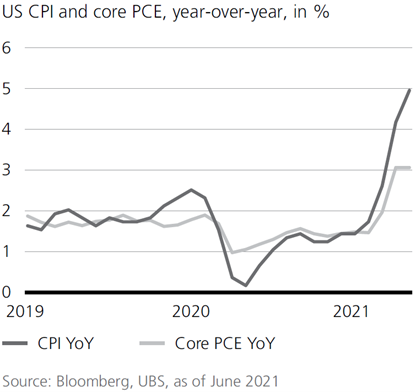Asset Allocation
June capped off a very difficult first half of 2022 in which both Equities and Fixed Income have re-valued significantly. Notably, the S&P500 bear market has been valuation-driven rather than earnings driven. Year-to-date through Q2 of 2022, the S&500 price-to-earnings multiple has dropped by 27% while earnings have grown 6.7%.
Our portfolios were equal weight equities, underweight fixed income and overweight commodities. After posting stellar gains in the first five months of the year, commodities struggled in June, prompting a sell signal in our portfolios.
Security Selection
In equities, exposure to the Emerging Markets Internet & E-Commerce theme (EMQQ) contributed to outperformance against the global equity benchmark. In Fixed Income, our active tilt towards short, held to maturity bonds contributed to outperformance performance against the longer maturity fixed income benchmark.
Detractors from Performance
Contributors to Performance
US Factor Rotation
Emerging Market Debt
Commodities
EM Internet & E-commerce
US Equity Premium Income ETF
iBonds: Investment Grade 22' and High Yield 23'
Underweight
Overweight
Technology Sector
Asia Pacific Equities
Government Debt
Western Europe
Financial Sector
Short Term Corporate Debt
Strategic Allocation Rationale
Asset Allocation:
We have a preference for Equities and Cash. We maintain our underweight to Fixed Income, and the recent price action in Commodities markets has prompted us to take profits on our position in diversified commodities.
Equities:
Recession is not our base case as corporate profitability remains strong, the consumer's balance sheet is healthy and inflation peaks. In the near-term we are cautious and in the medium-term we are bullish. We are geographically diversified and are selective with our US exposures, favoring quality and value stocks over growth stocks.
Fixed Income:
We remain underweight Fixed Income as high inflation continues to erode real returns and elevated interest rate volatility warrants caution. While we continue to favor shorter maturities, the historic rise in yields year-to-date now presents opportunities to increase duration. We are opportunistically adding to 2-to-6 year corporate bonds.
Alternatives:
Recent weakness has prompted us to take profits on our positions in Commodities. We are short term bearish, but persistent imbalances across the commodity complex give us reason to believe that the asset class can still warrant a place in portfolios. We will be closely monitoring for signs of strength, and will add if an opportunity presents itself.
Portfolio Changes Since Last Month
Decreased
Increased
Senior Floating Rate Loans
European Financial Sector Equities
TIPS
Cash Allocation
International Diversification
Held-to-Maturity 2023 High Yield Bonds
Disclosures: This information was produced by and the opinions expressed are those of Accuvest as of the date of writing and are subject to change. Any research is based on Accuvest proprietary research and analysis of global markets and investing. The information and/or analysis presented have been compiled or arrived at from sources believed to be reliable, however Accuvest does not make any representation as their accuracy or completeness and does not accept liability for any loss arising from the use hereof. Some internally generated information may be considered theoretical in nature and is subject to inherent limitations associated therein. Any sectors or allocations referenced may or may not be represented in portfolios of clients of Accuvest, and do not represent all of the securities purchased, sold or recommended for client accounts.
The reader should not assume that any investments in sectors and markets identified or described were or will be profitable. Investing entails risks, including possible loss of principal. The use of tools cannot guarantee performance. The charts depicted within this presentation are for illustrative purposes only and are not indicative of future performance. Past performance is no guarantee of future results. Actual results may vary based on an investor’s investment objectives and portfolio holdings. Investors may need to seek guidance from their legal and/or tax advisor before investing. The information provided may contain projections or other forward-looking statements regarding future events, targets or expectations, and is only current as of the date indicated. There is no assurance that such events or targets will be achieved and may be significantly different than that shown here. The information presented, including statements concerning financial market trends, is based on current market conditions, which will fluctuate and may be superseded by subsequent market events or for other reasons.



